Uttarakhand, the ‘Dev Bhoomi’ is dotted with numerous temples among which the Shiva temples hold special significance. It is, as it were Lord Shiva rules with great pomp and grandeur over this holy land. Read on to learn about the top Shiva temples of Uttarakhand
“Satyam Shivam Sundaram” – He who is Shiva is truth and he is also the beauty incarnate. Lord Shiva, the third of the holy trinity of the Hindus, is the god of destruction. The holy scriptures proclaim that he destructs the creation when it reaches the abyss of decadence. But, there is no feeling of fear or death associated with him. He is the ‘Nataraj’, the cosmic dancer. He is the destroyer of all evil and the protector of the virtuous, the rescuer of the good and the slayer of all things vile and wicked. The benevolent lord ‘Mrityunjay’ can also make his devotee ‘Mrityunjay’, one who has won over death.
A myth relates that Maharishi Markandeya got the blessings of immortality from lord Shiva while he was destined to die at only 16 years. To show their dedication and love, devotees have built temples of their beloved lord to find a place of calm and feel the benediction of their dear lord since time immemorial. We will take a quick view of the Shiva temples in Uttarakhand, the land of gods. The temples are not only spectacular for their architectural grandeur, but in fact more grand for the love and devotion of the devotees that is etched on the rocks for thousands of years fighting the belligerent Time.
There are 13 districts of Uttaranchal in total and each boasts of numerous Shiva temples which have drawn hordes of devotees from near and far. We will present you some very well-known and some less-known temples of Lord Shiva district wise.
Uttarkashi
North of Kashi, here also, like in actual Kashi, Ganga River is Uttar Vahini (that is flows northward as opposite to general flow to south direction). It is similar to Kashi in its renowned ghats, though fewer in number, and also the resident deity, Lord Vishwanath.
Vishwanath Temple
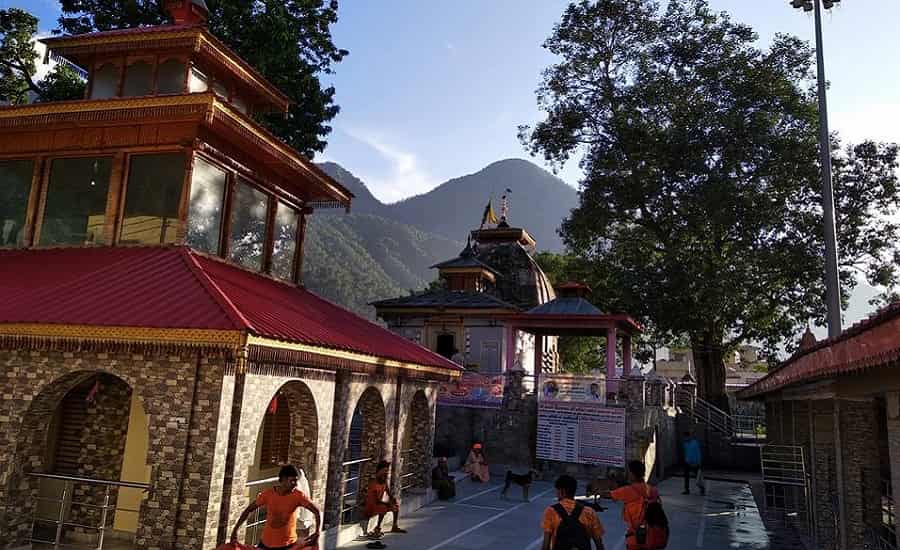 The most famous temple in Uttarkashi, and an ancient one, it is believed to have been built by Maharshi Parshuram. It was later renovated by Maharani Khaneti in 1857. The Shivling has height of 60 cm and circumference of 90 cm. At sunset, the ringing of the bell, the chanting of the hymns in praise of Lord Shiva and the sweet odour of the incense together create a divine vibration which takes you a notch higher in the spiritual plane.
The most famous temple in Uttarkashi, and an ancient one, it is believed to have been built by Maharshi Parshuram. It was later renovated by Maharani Khaneti in 1857. The Shivling has height of 60 cm and circumference of 90 cm. At sunset, the ringing of the bell, the chanting of the hymns in praise of Lord Shiva and the sweet odour of the incense together create a divine vibration which takes you a notch higher in the spiritual plane.
Kaleshwar Mandir
This temple is dedicated to lord Shiva and is situated in Joshiyara, a small village in Uttarkashi district. An old temple, it teems with devotees on the occasion of Shiv-Ratri and other holy occasions.
Chamoli District
The second largest district of Uttarakhand, it houses numerous holy shrines which attracts tourist all year round. This district came into news for ‘Chipko Movement’ when the locals protested against large scale cutting down of trees by clinging to the trees.
Gopinath Temple
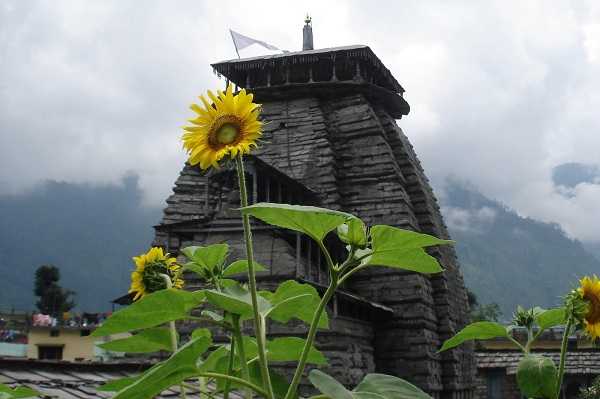
Built by the King of Katyuri dynasty, this temple is haloed by numerous several real experiences of divinity. The Shivling is worshipped only with Bel Patra (the leaves of stone apple/Bengal quince tree). In ancient time, people say, a cow used to bathe the Shivling with its milk placing its udder on the Shiv-ling.
Rudranath Temple
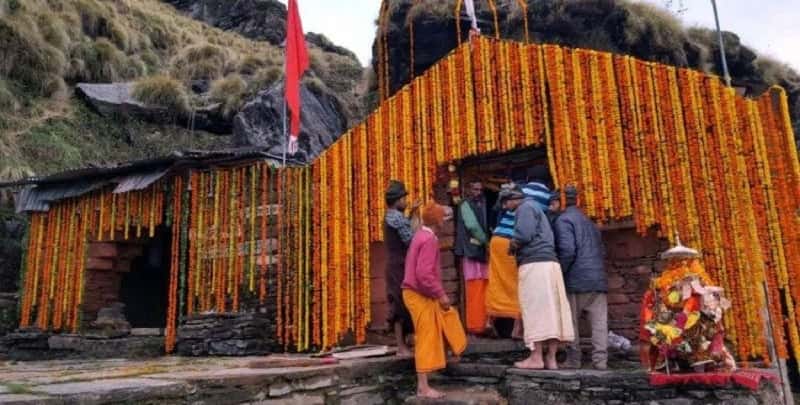
The toughest terrain amongst the Panch Kedar, this temple has an idol of Shiva which is covered with a fearful mask. The Rudra Ganges flowing beside is also called by the name ‘Baitarani’.
Kalpeshwar Mahadev Temple
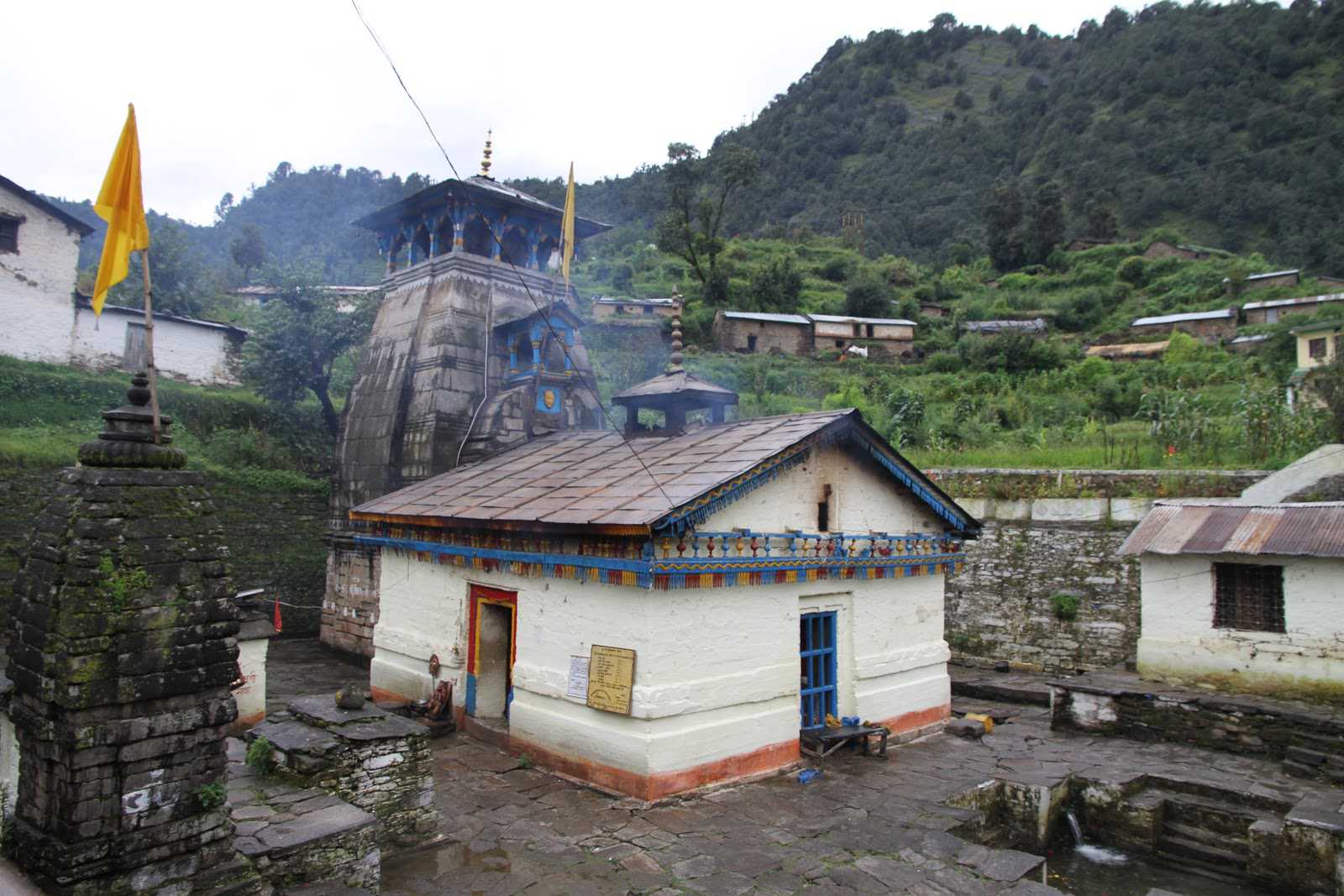 Situated in Urgam valley, one of the Panch Kedars, this ancient temple is believed to be built by the Pandavas. Here, the ‘Jata’ or matted tress of Lord Shiva is worshipped and so he is also called as Jateshwar.
Situated in Urgam valley, one of the Panch Kedars, this ancient temple is believed to be built by the Pandavas. Here, the ‘Jata’ or matted tress of Lord Shiva is worshipped and so he is also called as Jateshwar.
Rudra Prayag
Known for its scenic grandeur, this district too has quite a many pilgrimage spots attracting large number of tourists who come for peace.
The most famed temple of Lord Shiva which is open for tourists only in summer. In winter time it gets covered in snow and the idol is transferred to Ukhimath where it is worshipped in all reverence and glory.
Agasteshwar Mahadev
It is the love of Lord for his devotees that he is named according them. Here, in the Puranic age, powerful sage named Agastya Muni meditated him and henceforth came to be known as Agasteshwar.
Koteshwar Mahadev Temple
As amusing it can get, Bholenath himself meditated here to get rid of his menacing devotee, Bhasmasur! The story goes that Bhasmasur got the boon from the lord that as soon as he touches anyone’s head he/she will be turned to ashes. He wanted to try it on the giver of the boon, Lord shiva himself!
Madhyamaheshwar Temple
The panoramic Himalayan view here is worth millions. Madhyamaheshwar It is 46 km away from Rudraprayag and is the second in the Panch Kedar trekking circuit. The architecture is mesmerizingly beautiful.
Omkareshwar Temple
Situated in Ukhimath, it is well-known for being the winter abode of Tunganath, Kedarnath and Madmaheshwar. They are brought in palanquins with huge pomp and show after the winter closure of the previously mentioned temples.
Triyuginarayan Temple
Here both Lord Vishnu and Lord Shiva are worshiped with great reverence. Myth has it that Lord Shiva got married to Parvati here. The holy fire of the Yajna-Kund or the fireplace set during the the celestial marriage in Satya Yuga is still aflame, and hence also gets name Akhand Dhuni temple.
Tunganath Temple
Another temple of the Panch Kedar circuit, it is the highest temple of Lord Shiva which sits atop a staggering 3680 m. The architecture resembles the other typical hilly temples of the district. It is believed to be built by Arjuna, the third of the famed Pandavas.
Vishwanath Temple, Guptkashi
This temple also shares the same reverence as the one in Kashi. Mythical records state that Lord shiva proposed Parvati for marriage here in the very same place. ‘Gupta’ means hidden, and the deity is named so because Shiva did not want to meet the Pandavas when they came to visit after the Kurukshetra war because although they fought for the right cause they also destroyed their own clan.
Tehri Garhwal District
Situated in the southern part of the Himalayas, this district has still kept its culture and natural beauty intact. Myth has it that Brahma meditated in this land before creating the Universe.
Budha Kedar Temple
The shiva linga here believed to be the largest in the entire north India; the temple prides its association with the Pandavas. Situated at the confluence of Dharam Ganga and Bal Ganga, it is enveloped with charming hilly sights all around.
Dehradun
One of the oldest cities in India, it used to be a summer-time address for the Britishers. The name, as the locals say, is derived from Dron ki Dera meaning the residence of Dronacharya, the martial master of the Kauravas and Pandavas.
Lakha Mandal Temple
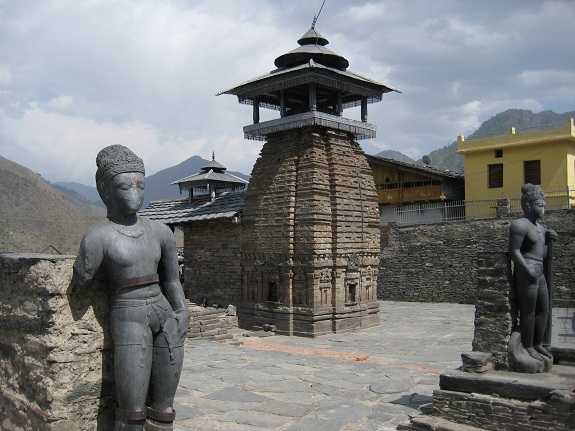
It is believed that Duryodhana built a house of lacquer here to burn and kill the Pandavas. Locals believe that whoever visits this temple get rid of misfortune. The temple houses quite a number of lingas and statues.
Tapakeshwar Temple
Actually a cave, this temple is named such because little drops of water trickle down on the Shiva-ling without miss. The trickling down of water is called ‘tapak’ and hence Tapakeshwar. It is also believed that Dronacharya used to worship Lord Shiva here and resided nearby.
Rameshwar Temple (Rishikesh)
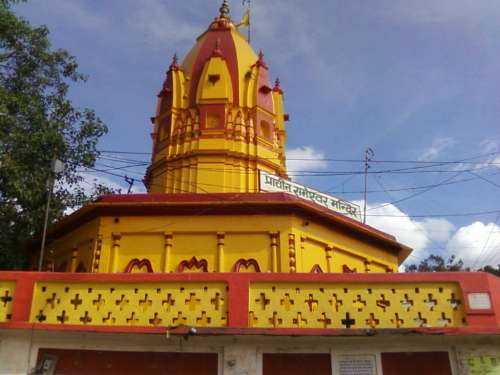
The colourful temple catches one’s eye from quite far a distance. Situated near Ram Jhoola in Rishikesh, this temple attracts local devotees in large numbers.
Pauri Garhwal District
The district has topographical variety ranging from the Tarai regions of Kotdwar to the snow-laden peaks and verdant meadows. The Gangetic plains and the Himalayan mountain together create a breathtaking beauty which is Pauri Garhwal.
Kamleshwar Mahadev Temple
On Vasant Saptami, 52 kinds of different dishes are offered to the lord. It is believed that if a child-less couple stands all night with an earthen lamp in hand on Kartik Chaturdashi in the temple campus, they will be blessed with a child.
Neelkanth Mahadev Temple
Situated in a scenic surrounding about 32 km from Rishikesh, this temple is named according to the brave deed of lord Shiva. During the sea-churning, when the deadly poison ‘Halahal’ came up only Lord Shiva came up to drink it. It was so poisonous that his throat blue and hence he got named as Neelkanth.
Bindeshwar Mahadev Temple
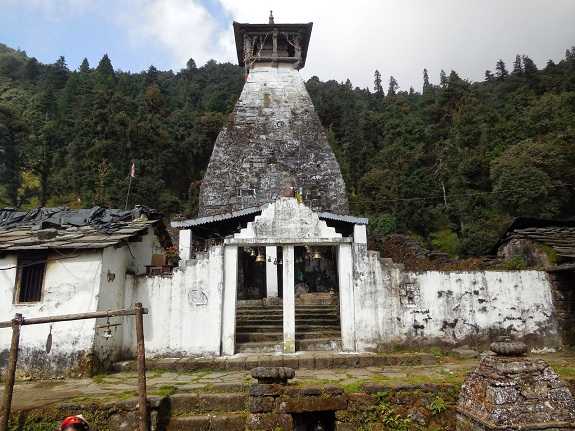
Highly revered by the locals this ancient temple in situated in a quaint location surrounded by mountain greens and blooms. On Vaikunth Chaturdashi around October-November, a big fair is organized and people from neighboring districts come here too. The king Prithivi had built this temple in memory of his father King Bindu, and hence the Shivling got the name Bindeshwar, the British tongue unable to pronounce it changed the name to Binsar.
Pithoragarh District
The alpine meadows and snow-capped peaks display the natural bounty. The ancient temples and ruins of the Chand dynasty is reminiscent of the glories of the past.
Kapileshwar Mahadev Temple
The temple got its name from sage Kapil who meditated here and hence Kapileshwar. A beautiful cave temple in Soar valley, 3 km from Pithoragarh, is worth a visit for the scenic surrounding outside and the meditative cam inside.
Patal Bhuvaneshwar Temple
Situated 13 km from Gangolihat, this limestone cave temple is 90 m deep and about 160 m long. It is the abode of 33 crore gods and goddesses as the local folk-lore goes by. There are several stalagmite statues that include matted lock of hair of Lord Shiva, Airavat of Lord Indra, tongue of Kalbhairav and many such astounding features.
Bageshwar
Flanked by Chandika and Neeleshwar mountains from two sides, Bageshwar lies at the holy confluence of Gomti, Sarayu and Saraswati(latent). The land named after Lord Shiva is believed to redeem all sins.
Baijnath Temple
Interestingly, unlike other temples, the back-side of the deity-lord is worshipped in this temple. Kot Bhramari temple, a popular shakti peeth, is 2 km from the temple.
Bagnath Temple
Shiva is seated on tiger-skin as Puranas tell, and he is therefore named Bagnath, the lord of the tiger. Seated at the confluence of Gomti and Sarayu, about 90 km from Almora, this temple attracts millions of devotees in the holy month of Shravana.
Almora
The picture postcard beauty of Almora has drawn tourists and pilgrims alike. In ancient times, during the ruling Chand dynasty, Almora was known as Rajapur or Rajpur.
Binsar Mahadev Temple
Maharaj Kalyan Chand of Chand Raja dynasty had built this temple excelling in architectural grandeur. The central deity, Lord Shiva, is worshipped by the locals with utmost reverence.
Gananath Temple
The auspicious occasion of Kartik Purnima pulls a lot of local devotees. It is situated in Satrali village, about 47 km from Almora. Lord Gananath is worshipped with full devotion and fervor.
Jageshwar Temple
The temple holds its serenity seated amongst the verdant hilly vegetation. Holy occasions draw a lot of people; otherwise the temple is generally peaceful and appropriate for meditation.
Maha Mrityunjaya Temple
The priests state that whoever chants the holy Mahamrityunjay mantra in this temple gets rid of fear and death. The temple therefore is aptly named after one of the thousand named of Lord Shiva.
Someshwar Temple
A beautiful temple seated in the verdant hilly greens about 11 km from Kausani, the temple houses the chief deity Lord Shiva named as Someshwar Mahadev. The temple is named after Raja Som Chand, the ruling king who built the town many a years ago.
Vriddh Jageshwar Temple
This temple located 3 km from Jageshwar, another temple in Almora, houses the deity who is worshipped in an aged form of lord Shiva. He is also called Bada Jageshwar. It is believed that whoever worships here is blessed with enormous fortune.
Champawat District
The easternmost district of Uttaranchal, it is the second least populated district of the state. The serene and picturesque beauty is similar as in other districts of the state.
Baleshwar Temple
Shiv-Ratri is celebrated in the temple compound with huge pomp and show. Built around 10-12th century, the temple features extraordinarily beautiful stone carvings.
Kranteshwar Mahadev Temple
Also known as Kandev and Kurmapad, Kranteshwar Mahadev is situated about 6 km from Champawat. A hilly temple, it attracts local devotees in holy occasions.
Pancheshwar Temple
At the India-Nepal border, Pancheshwar temple is seated at the confluence of Sarayu River and Kali River. A small temple, it draws the locals in occasions like shiv Ratri, Shravan Purnima etc.
Nainital
The place got its name from Devi Naini, a local deity believed to an incarnation of Shakti. Taal means water tank. Naini Taal is actually a juxtaposition of two words meaning the lake of Devi Naini. Its picturesque charm is a major attraction for the tourists apart from the ancient temples and other tourist spots.
Mukteshwar Temple
The holy shrine is situated about 51 km from Nainital. It is named such as Lord Shiva is believed to grant ‘Mukti’ or freedom from the unending cycle of birth and death and hence the name Mukteshwar.
Udham Singh Nagar
The district lies in the vicinity of the spectacularly beautiful Kumaon Mountains. Earlier, it was included in the Nainital district and later in October 1995, it gained its separate identity as a full-fledged functioning district.
Bhimshankar Mahadev Temple
Also known as Moteshwar Mahadev temple, this temple in Kashipur is considered one of the twelve jyotirlings of Lord Shiva and worshipped with full grace and splendour. In ancient times, this temple was also known as Dakini.
Bhole Baba Pathari Wale
This temple is located a few km away from Kashipur, a local deity in the form of Shiva is worshipped by the locals with full devotion. It is situated near Kundeshwari in Dhakiya village.
Haridwar
Also famously termed as ‘Gateway to Gods’, Haridwar is a miniature version of the Sanatan culture, the ancient culture of the Hindus. Haridwar is also fondly named in ancient times as Mayapuri, Kapila and Gangadwar. The gateway to the Land of Dev Bhoomi, it serves as entry point for the Chardham pilgrimage and other pilgrimages.
Gauri Shankar Temple
The pilgrims visiting Haridwar should visit this temple. It is situated near Chandi Devi temple and houses Shivling which draws lots of devotees.
Bilkeshwar Mahadev Temple
Dedicated to lord Shiva, this temple is a famous tourist attraction in Haridwar. One can feel a meditative calm effusing out of the temple. It is a must-see spot of Haridwar.
Abode of the Gods, Uttaranchal is wrapped in snow, beauty and bliss. The cold weather is complemented by the warmth and the simplicity of the locals. It seems Lord Shiva has blessed this land with infinite beauty and eternal charm. His fondness for the land is manifest in the numerous Shiva temples where he found his holy residence. From time immemorial, the holy land has drawn millions of devout hearts to find enlightenment and progress in the spiritual plane. Let us all hail to the Lord, take his name and start our journey! Jai Shankar!


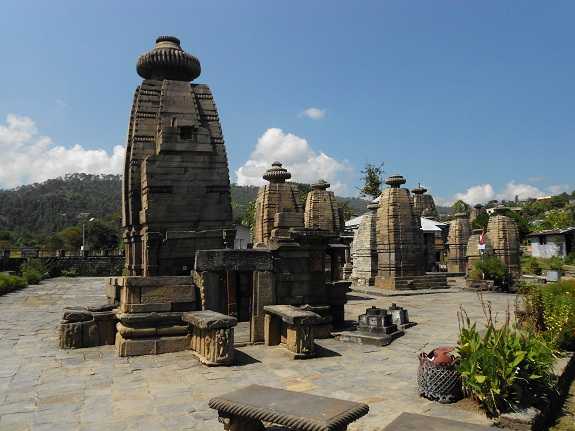

 Call
Call WhatsApp
WhatsApp Enquiry
Enquiry




Leave a Reply